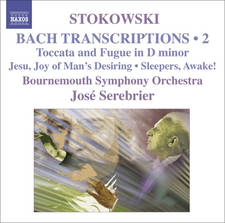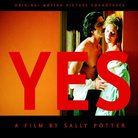The best (and strangest) pieces of music by Erik Satie
16 April 2025, 17:07 | Updated: 16 April 2025, 17:52

From his ambient Gymnopédies to his posthumously published Vexations, here are some of Erik Satie's most extraordinary works.
Listen to this article
Erik Satie was a French composer and pianist born in 1866. He was, to put it lightly, eccentric. He started his musical career playing in cabaret-cafes in Montmartre in Paris, and did not complete his diploma at the Paris Conservatoire.
He was scorned by the French music establishment while he was alive. His music was full of gags, witty titles and was often accompanied by poems or extramusical texts. He only ate white foods and kept a strict timetable to his day, writing in his book, Memoirs of an Amnesiac, that: “I rise at 7:18; am inspired from 10:23 to 11:47. I lunch at 12:11 and leave the table at 12:14. A healthy ride on horseback round my domain follows from 1:19pm to 2:53pm”.
His work ranges from atmospheric, nostalgic songs to ironic and angular works. Take a look at some of his best (and strangest) music.
Read more: The 20 best piano concertos of all time
-
3 Gymnopédies
The first of Satie’s Gymnopédies is one of his most recognisable works and is the first in a trio of dreamy and nostalgic pieces for piano. He completed the set in 1898 but each was published separately, the first and third in 1888 and the second in 1895. The title translates to ‘Three Nude Dances’, named after an ancient Greek festival where young men danced either naked or unarmed. Debussy also orchestrated the first and third pieces in 1897.

Erik Satie Trois Gymnopedies
-
6 Gnossiennes
Satie’s Gnossiennes are a collection of dreamlike piano miniatures, written mostly in free time, with free-flowing rhythm and form. The etymology is contentious but one theory finds that Gnossiennes combines the words ‘Gnose’ (from the Greek ‘gnosis’) which in French means knowledge, and ‘sienne’ (the feminine for ‘sien’) which means oneself. So, it’s an introspection on how you express yourself musically and how you express yourself as a person. Satie certainly put some considerable thought into both...

Erik Satie - Gnossienne No. 1
-
Je te veux
Satie composed this waltz, with lyrics by poet Henry Pacory, for Parisian singer Paulette Darty, whose accompanist he was. She was known as ‘the queen of the slow waltz’ and first performed it in 1903 at La Scala, in Paris. It has been recorded many times since its premiere, including by Yvonne George and Jessye Norman and, as part of his nine short songs, Sonnekus², John Cage instructs his performer to sing the piece.

Jessye Norman - Je te veux (Subtitulado)
-
Parade
This ballet, choreographed by Leonide Massine, was composed for Sergei Diaghilev’s Ballets Russes and premiered in May 1917. Satie had never composed ballet music before but playwright Jean Cocteau had heard Satie’s Trois morceaux en forme de poire and decided to write a scenario for him to compose to. Pablo Piscasso (who had also never worked on a ballet before) designed the set and costumes. Following a poor review of the work’s premiere from critic Jean Pouleigh, Satie wrote to him, saying: “Monsieur et cher ami – vous êtes un cul, un cul sans musique!”, which translates to “Sir and dear friend – you are an arse, an arse without music!”. Pouleigh sued Satie, and at the trial, Cocteau was arrested and beaten by police for repeatedly yelling “arse” in the courtroom.

PARADE - Erik Satie
-
Véritables préludes flasques pour un chien
The title of this collection of three piano pieces translates to “true flabby preludes for a dog”. This was his second volume of music for a dog, after the first had been rejected by Debussy’s publisher, Durand. The pieces feel worlds away from the ambience of his Trois Gymnopédies, and are much more eccentric, but, unlike his other music, contain time signatures and bar lines.

Erik Satie ~1912~ Véritables Préludes Flasques (Pour un chien)
-
Trois Morceaux en forme de poire
This suite for four hands contains seven pieces, rather than the three that are suggested by the title. It has been suggested that he chose to write this duet to provide an opportunity for him and his good friend Debussy to play together. In 1953, choreographer Merce Cunningham created a ballet, Septet, to the score of the Trois Morceaux and in 2013 British actor Alistair McGowan wrote and starred in a play about Satie’s life called Three Pieces in the Shape of a Pear.

Erik Satie Trois morceaux en forme de poire
-
Vexations
The manuscript of Vexations does not specify an instrument, but it is assumed that it is composed for keyboard. However, while no instrument is specified, the manuscript did have an inscription that stated: “Pour se jouer 840 fois de suite ce motif, il sera bon de se préparer au préalable, et dans le plus grand silence, par des immobilités sérieuses”, meaning “In order to play the motif 840 times in succession, it would be advisable to prepare oneself beforehand, and in the deepest silence, by serious immobilities.” Does this mean Satie wanted the performer to play it 840 times? The piece was never published in his lifetime, and was only given its premiere in September 1963, 70 years after it was written.

Satie: Vexations
-
Cinq Nocturnes
These were Satie’s last piano works and were written the year after Debussy had died. They had initially been intended to be satirical and humorous – the first was even initially meant to be called Faux Nocturne, meaning ‘fake nocturne’. But following a difficult period of his life, he decided to write them without the witty titles, parody, and additional texts he had historically weaved into his works.

Satie: 5 Nocturnes






